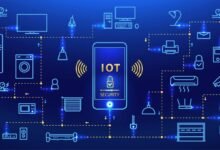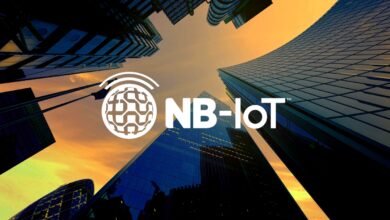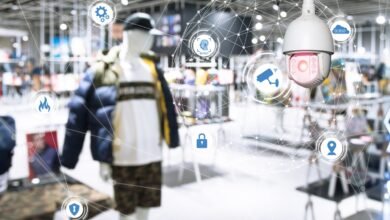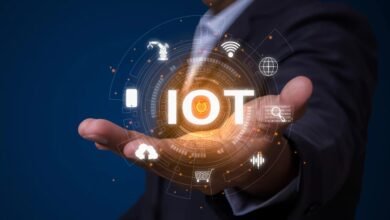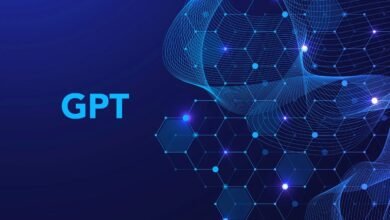IoT Business Models That Are Thriving in Germany
In this article, we’ll explore the IoT business models that are thriving in Germany, providing a detailed analysis of how each model works, the industries adopting them, and what makes them successful in the German market.

Germany, known for its industrial prowess and engineering innovation, is rapidly emerging as a hub for cutting-edge Internet of Things (IoT) technologies. The fusion of digital transformation with traditional industries under initiatives like Industrie 4.0 has positioned Germany as a leader in implementing profitable IoT business models. From predictive maintenance to smart agriculture and connected healthcare, a wide range of industries are embracing IoT to drive efficiency, cut costs, and enhance customer experiences.
In this article, we’ll explore the IoT business models that are thriving in Germany, providing a detailed analysis of how each model works, the industries adopting them, and what makes them successful in the German market.
1. Product-as-a-Service (PaaS)
What It Is:
The product-as-a-service model involves selling the function or outcome of a product rather than the product itself. For example, instead of selling a heating system, a company offers “heating-as-a-service,” where the customer pays based on usage.
German Success Story:
Companies like Kaeser Kompressoren, a German manufacturer of compressed air systems, have adopted this model by offering compressed air as a utility. Customers pay for the air they use, while Kaeser handles maintenance and operation through IoT-enabled monitoring.
Why It Works in Germany:
-
High demand for cost-effective, energy-efficient solutions.
-
Strong B2B industrial ecosystem.
-
IoT sensors track usage, predict failures, and optimize operations.
2. Pay-Per-Use Models
What It Is:
This model allows customers to pay only for the actual usage of a product or service, tracked in real-time by IoT devices.
Application in Germany:
In the agricultural sector, IoT-based irrigation systems are being sold on a pay-per-use basis. German agri-tech startups use moisture sensors and weather data to optimize water usage and charge farmers accordingly.
Benefits:
-
Lower upfront investment for customers.
-
Real-time billing and usage insights.
-
Sustainability through optimized resource use.
3. Data Monetization Model
What It Is:
In this model, companies generate revenue by collecting, analyzing, and selling data gathered from IoT devices.
German Use Case:
In the automotive sector, firms like Bosch and Continental are using IoT sensors to gather data on vehicle performance, road conditions, and driver behavior. This anonymized data is sold to city planners, insurance companies, and other stakeholders.
Why It Thrives:
-
Germany’s strong data privacy regulations promote trust.
-
Value-added services like traffic optimization and accident prevention.
-
Opportunities for cross-industry collaboration.
4. Freemium IoT Services
What It Is:
The freemium model offers basic services for free while charging for premium features. In the IoT space, this could be a basic tracking service with paid analytics.
Case Example:
Smart home startups in Germany, such as those offering IoT security systems, use freemium pricing. Basic motion alerts are free, but features like facial recognition or cloud video storage come with a monthly fee.
Advantages:
-
A low barrier to entry encourages trial.
-
Opportunity to upsell based on user behavior.
-
Recurring revenue through subscriptions.
5. Subscription-Based Business Model
What It Is:
This model involves providing IoT services through a recurring payment system—weekly, monthly, or annually.
Example in Germany:
E.ON, a major energy provider, offers smart energy management tools on a subscription basis. Their IoT-enabled thermostats and energy meters help homeowners optimize consumption, track usage patterns, and reduce bills.
Why It’s Effective:
-
Predictable revenue stream.
-
Continuous engagement with customers.
-
Allows for remote updates and maintenance.
6. Outcome-Based Business Models
What It Is:
Customers pay for outcomes achieved with the help of IoT—such as increased uptime, reduced emissions, or better performance—rather than specific product usage.
Industrial Use Case:
German manufacturing firms are adopting this model for predictive maintenance. Companies like Siemens use IoT sensors to monitor machinery and guarantee minimum downtime. Payments are linked to machine availability and performance, not just maintenance visits.
Core Strength:
-
Aligns vendor incentives with customer success.
-
Encourages innovation in predictive analytics.
-
Reduces unplanned downtime significantly.
7. Platform-as-a-Service (PaaS) for IoT
What It Is:
Companies offer a digital platform where third parties can build IoT applications or services. This is particularly effective for fostering an ecosystem around hardware.
German Example:
Software AG’s Cumulocity IoT platform is a leader in this domain, offering a robust environment for connecting devices, analyzing data, and automating processes. It supports verticals from logistics to manufacturing and healthcare.
Key Benefits:
-
Scalable business opportunities.
-
The developer ecosystem drives innovation.
-
Centralized data management and analytics.
8. IoT-Enabled Supply Chain Optimization
What It Is:
This model involves using IoT devices to optimize supply chain processes and sell those capabilities to businesses.
How It Works in Germany:
German logistics companies, such as DHL and DB Schenker, utilize IoT sensors for real-time tracking of shipments, cold-chain monitoring, and warehouse automation. They monetize these capabilities by offering end-to-end visibility solutions to clients.
Strategic Impact:
-
Improved delivery accuracy.
-
Reduced spoilage and losses.
-
Competitive differentiation through transparency.
9. Digital Twin Monetization
What It Is:
Digital twins are virtual replicas of physical systems or assets. Businesses in Germany are selling digital twin services for equipment simulation, monitoring, and lifecycle management.
Industrial Focus:
BASF and Siemens use digital twins in factory environments to test new configurations without disrupting actual processes. These services are often licensed or billed based on the number of assets digitized.
German Advantage:
-
Strong engineering expertise.
-
Integrated systems design culture.
-
Ideal for industrial automation.
10. B2B IoT Ecosystems and Collaborations
What It Is:
This model fosters collaboration among multiple stakeholders—manufacturers, developers, and integrators—on a shared IoT platform.
Implementation in Germany:
The Industrial Internet Consortium Germany and Plattform Industrie 4.0 are building shared frameworks for device interoperability and security. Companies generate revenue through licensing, custom integration services, and consulting.
Collaboration Wins:
-
Accelerated innovation.
-
Shared development costs.
-
Stronger standardization and adoption.
Challenges and Future Outlook
While Germany is at the forefront of industrial IoT innovation, certain challenges still persist:
-
Data privacy concerns under GDPR.
-
Integration complexities with legacy systems.
-
High initial investment for IoT infrastructure.
However, these challenges are being steadily addressed through public-private initiatives, robust research funding, and scalable cloud technologies.
The future of IoT business models in Germany is likely to include more hybrid models, AI-driven services, and deep personalization based on real-time insights. As 5G and edge computing become more prevalent, IoT’s impact across industries will only accelerate.
Conclusion
Germany has successfully blended its strong manufacturing base with digital innovation, giving rise to IoT business models that are not just surviving but thriving. From product-as-a-service to data monetization and digital twins, these models are shaping the future of connected ecosystems in Europe and beyond.
Businesses aiming to enter or expand in the German market should pay close attention to these trends. Whether you’re a startup or an established enterprise, understanding and adapting to the evolving IoT business landscape in Germany can open up lucrative opportunities.
Call to Action
Are you a business looking to implement or scale an IoT solution in Germany? Now is the time to explore innovative IoT business models that align with your goals. Contact local IoT consultants, invest in platform-based ecosystems, or partner with German tech firms to accelerate your digital journey.
